Exploring the Depths of Tarot Card Prediction
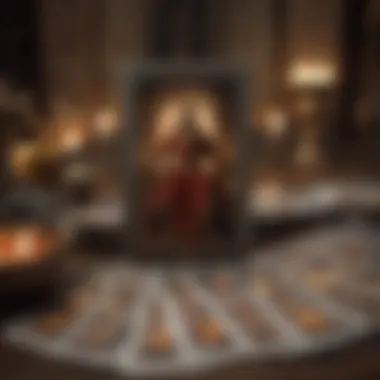
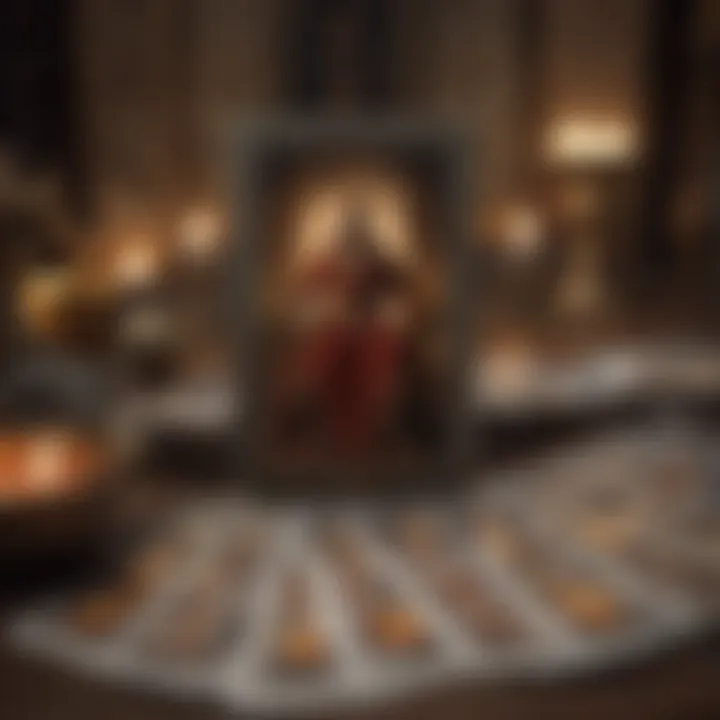
Intro
Tarot card prediction is often seen through a mystical lens, yet its roots delve much deeper into human psychology and emotion. To fully grasp the complexities and art of tarot readings, we must first understand how the cards reflect broader patterns present in our lives. The journey into tarot is layered, revealing insights that extend beyond mere fortune-telling. This exploration introduces a nuanced perspective on how tarot can serve as a powerful tool for personal growth and reflection.
In this narrative, we will delve into the significance of tarot in interpreting experiences, understanding symbolism, and tapping into intuition. By examining different tarot spreads and their meanings, readers will not only learn to read the cards but also to connect them with their lives in meaningful ways.
As you walk through the pages of this guide, consider how each aspect intertwines to present a fuller picture of the self. Whether you are a seasoned tarologist or just starting out, the insights presented here aim to enrich your journey toward self-discovery.
Intro to Tarot Card Prediction
Understanding tarot card prediction holds considerable significance within both spiritual practices and personal development. It unlocks opportunities for insights and reflections, affording seekers a means to navigate the labyrinth of experiences that life presents. The importance of this discussion lies not only in its historical roots but also in how tarot can serve as a guiding beacon in turbulent waters.
Defining Tarot and Its Purpose
Tarot is more than just a collection of forty-eight illustrated cards; it represents a profound language of symbols and archetypes that speaks to the subconscious. Each card can be thought of as a mirror reflecting the myriad paths of human experience. At its core, the purpose of tarot lies in aiding individuals to comprehend their surroundings and instincts, enabling self-discovery and personal growth.
A typical tarot deck comprises major and minor arcana, with each card infused with its own narrative and lessons. Whether one is facing existential dilemmas or mundane queries, tarot serves as a tool for clarification and contemplation. It invites the reader to engage deeply with their intuition, fostering a dialogue between inner thoughts and external realities.
Historical Context of Tarot Cards
The history of tarot is as intricate as the cards themselves, weaving through centuries of mysticism, art, and psychology. Originating in the 15th century as playing cards in Europe, they eventually transformed into tools of divination by the late 18th century. Scholars and esotericists often debate the exact lineage of tarot, with theories suggesting influences from ancient Egypt to the Kabbalah.
Despite bustling narratives of its origins, the significance of tarot has persisted. From the courts of Renaissance Europe to contemporary spiritual circles, tarot has evolved yet maintained its role as a vessel of wisdom. As society’s understanding of the psyche grew, so did the embrace of tarot within realms such as psychology, notably by figures like Carl Jung, who appreciated its archetypal qualities.
The adoption of tarot by various spiritual movements further solidified its relevance, making it an omnipresent resource for those embarking on quests of self-discovery.
In essence, grasping the historical context enriches our appreciation of the tarot card prediction, illuminating the paths it opens and the depth it brings to our lives. This exploration lays the groundwork for a more comprehensive dive into how tarot functions today, its methodologies, and its myriad interpretations.
Understanding the Structure of Tarot Decks
Understanding the structure of tarot decks is a cornerstone in grasping the full essence of tarot card prediction. It opens a window to insights that go beyond mere card reading and towards the architecture of meaning in life itself. Each card plays a role, much like actors on a stage, contributing to a greater narrative that reflects our situation, emotions, and aspirations. Mastering the structure helps in discerning nuances that can guide interpretations, ensuring that readers can dive deeper into their insights.
Major Arcana: The Significant Cards
The Major Arcana consists of twenty-two cards that signify pivotal life themes and lessons. These cards encapsulate major archetypes and profound spiritual journeys. When these cards appear in a reading, they often indicate significant life events or shifts that might carry long-lasting repercussions. For instance, The Fool, which signifies new beginnings, invites the querent to embrace the unknown and take risks, while The Tower, often representing chaos or upheaval, suggests that change, though uncomfortable, can carry transformative power.
The depth of these cards is immense. They serve as a spiritual compass, guiding us through the complexities of life. Understanding each card's significance—its imagery, symbolism, and traditional associations—can reveal not just the circumstances at play, but also the emotional undertones and lessons inherent in those experiences. Therefore, when tackling a tarot reading, focusing on the Major Arcana can lead to pivotal revelations.
Minor Arcana: Everyday Influences
The Minor Arcana, comprising seventy-six cards divided into four suits, deals with the day-to-day experiences and influences that shape our lives. These suits—Cups, Pentacles, Swords, and Wands—represent essential aspects of human life: emotions, materialism, thoughts, and actions respectively.
- Cups: Relate to emotions and relationships. Often, the cards in this suit reflect our feelings, connections, and how we interact with others.
- Pentacles: Focus on material concerns and the physical world. They often deal with aspects such as career, finance, and home life.
- Swords: Represent intellect and conflict. Cards from this suit typically highlight challenges involving thoughts and decisions.
- Wands: Evoke creativity and action. They often reflect ambition, inspiration, and the drive to realize one’s dreams.
Each suit carries its own narrative, contributing to a mosaic of insights that can illuminate the querent's current challenges or influences. The interplay between the Minor Arcana and Major Arcana forms a comprehensive picture detailing both ordinary and extraordinary experiences.
Court Cards: Personal Archetypes
Court Cards bring a personal touch to tarot readings. They can signify people in the querent’s life—like friends, family, or colleagues—or they embody different aspects of the querent’s personality. Comprising Kings, Queens, Knights, and Pages, these cards offer insights into one's character traits or the roles individuals play within relationships.
For example, encountering the Queen of Cups might point to a person who is nurturing, intuitive, and emotionally aware. Conversely, the Knight of Swords suggests someone driven, intelligent, yet potentially rash.
The presence of Court Cards in a reading not only adds depth but also encourages a personal reflection on how the querent connects with various traits or behaviors. A well-rounded reading requires understanding these archetypes and recognizing how they might manifest in one's day-to-day life or emotional struggles.
"The cards are like a mirror, reflecting not only what surrounds us but also what lies within. Knowing how to read them requires an understanding of their structure, as well as the willingness to delve into our own psyche."
In summary, as one ventures into the realm of tarot reading, familiarizing oneself with the structure of tarot decks is crucial. This knowledge lays a foundational understanding that enhances the interpretation of both Major and Minor Arcana and helps to unfold the layers each card presents.
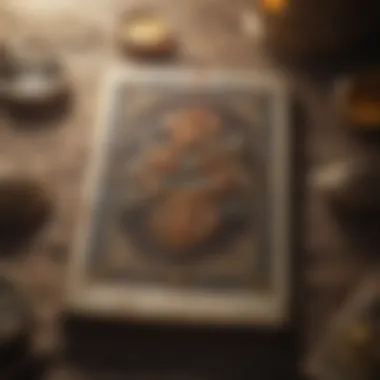
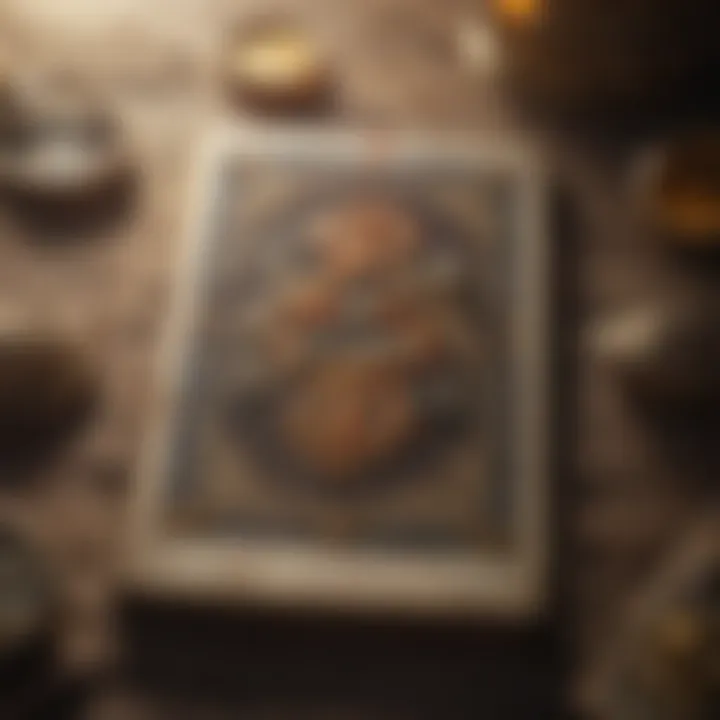
The Process of Tarot Card Reading
The process of reading tarot cards stands as a pivotal component in the journey of self-discovery and insight. It is not merely about the cards themselves, but rather about the intentions, contexts, and interpretations that surround them. The significance of the reading process lies in its ability to bridge one’s present conditions with the latent potential of the future. Each card drawn becomes a conversation starter, leading to insights that may have been clouded in the tumult of daily life.
In this exploration, setting clear intentions before a reading serves as a foundation. It directs the focus, allowing the reader to align their energies with the query at hand and facilitates a more meaningful connection with the cards. When intentions are set, the interpretation process can become remarkably intuitive, leading to revelations that may resonate deeply on personal levels.
Setting the Intention for a Reading
Every successful tarot reading hinges on the intention behind it. Setting this intention is akin to planting a seed before nurturing it to growth. The clearer the intention, the more focused the energy, which in turn invites clarity into the interpretation of the cards. Sprinkling a personal touch, such as a specific question or a broader thematic inquiry about life transitions, helps shape the path of the reading.
It’s critical to ensure that the intention resonates authentically with the reader’s current state. Otherwise, it can feel as if one is expecting wisdom from an empty well. Think of intentions as the lighthouse guiding the ship home through foggy seas. They illuminate, providing direction and insight.
Choosing a Tarot Spread
Selecting the right tarot spread can significantly influence the quality and depth of a reading. Each spread offers different perspectives and layers, drawing attention to aspects of one’s life that may require exploration. It's like picking the right tool for the job; each spread has its own purpose, and understanding these purposes can enhance the reading experience.
Single Card Spread
The single card spread stands out for its simplicity and effectiveness. It serves as a straightforward solution for quick insights. Imagine it as asking a friend for a quick piece of advice; there's no need for unnecessary froth when clarity can be had in a single statement. This spread is particularly beneficial for those looking for immediate guidance or contemplation on a specific matter.
A unique feature of the single card spread is its versatility—whether it’s optimism on a new endeavor or reflection on an existing situation, one card can reveal profound truths.
Advantages:
- Immediate clarity on pressing questions
- Easy to perform, requiring minimal setup
Disadvantages:
- Limited depth; may not cover broader nuances of complex situations
Three Card Spread
The three card spread builds on the robust foundation of the single card approach but adds layers of complexity and nuance. Each card can represent different timeframes—past, present, and future—or simply highlight three perspectives on the same issue. Picture it like a mini roadmap; it gives a clearer picture while maintaining the beauty of mystery. This spread is a popular choice among many due to its balance between simplicity and depth.
The unique feature here is the interaction between the cards, offering a more holistic view of the situation at hand. It’s particularly effective for growing self-awareness or making informed decisions without drowning in information overload.
Advantages:
- Provides context by linking the cards together
- Great for exploring transformative moments in life
Disadvantages:
- Could feel overwhelming if the cards offer too many contradictory messages
Celtic Cross Spread
The Celtic Cross Spread is often seen as the quintessential tarot spread. It’s elaborate, encompassing ten positions that provide a thorough examination of a querent's life situation. Think of it as delving into a novel versus reading a headline; the depth of information offered is both enriching and extensive. This spread is ideal for intricate questions or exploring life’s patterns deeply.
What makes the Celtic Cross unique is its comprehensive nature. It delves into areas such as obstacles, influences, and potential outcomes. It’s a magnificent tool for those who wish to immerse themselves in a detailed exploration of their circumstances.
Advantages:
- In-depth exploration of complex issues
- Allows for a nuanced understanding of interrelated life aspects
Disadvantages:
- Time-consuming and may require significant interpretation skill
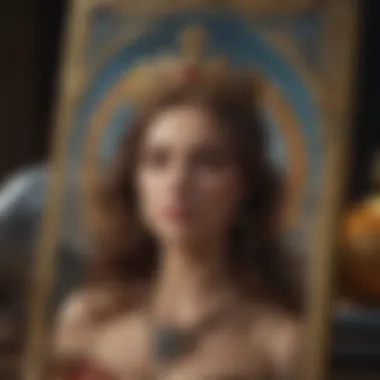
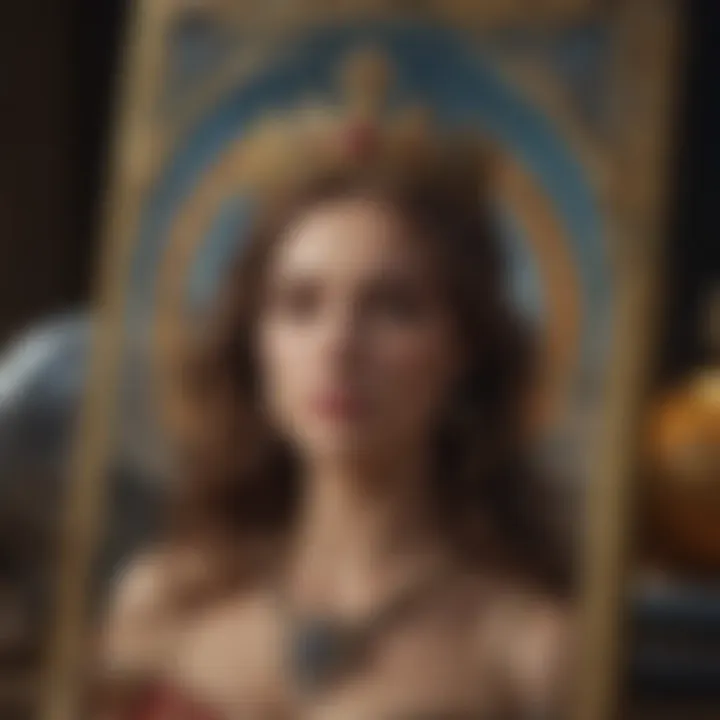
Understanding the choice of spread can greatly enhance the effectiveness of a tarot reading.
In sum, each step in the process of tarot card reading, from setting intentions to choosing an appropriate spread, contributes significantly to the quality of insights gained. The art lies in blending intuition with technique, creating a personal dialogue with the tarot that unfurls insights into the heart of the querent's questions.
Interpreting Tarot Cards
Interpreting tarot cards opens a rich tapestry of insight, wrapping the reader in layers of meaning that one can peel away. It's akin to unearthing hidden treasures within oneself. The act of interpretation goes beyond simply reading the cards; it's about engaging with them on a personal level. Each card offers a unique story, reflecting aspects of the querent's experience and emotions. This dynamic process fosters self-discovery, where individuals may find answers to unasked questions or clarity to confusing situations.
The Role of Intuition in Interpretation
Intuition plays a pivotal role in interpreting tarot cards. It's not just the logical analysis of symbols or the textbook definitions; it's about trusting one’s inner voice. Often, during a reading, readers might sense a particular message resonating strongly with them. These intuitive nudges can guide the reader, providing insights that appear to emerge from thin air, making it feel rather like tapping into a deeper well of understanding.
Consider this: a card, say The Fool, might initially suggest naivety or new beginnings. But in the context of a specific question, a reader might feel it implies a leap of faith is needed. This kind of intuitive leap is what enriches the reading. Relying on intuition can create a more personalized and meaningful experience for both the reader and the querent.
Symbolism and Imagery in Tarot
The language of tarot is steeped in imagery and symbolism. Every card has its own visual elements, color schemes, and figures, all of which serve as gateways to deeper meanings. For instance, the imagery on The Moon card may evoke feelings of mystery and confusion, while the sun's bright rays in The Sun card symbolize clarity and success.
When interpreting symbols, it's essential to recognize that these images can resonate differently with each individual. Some might see a wolf in a card and immediately think of loyalty, while others might perceive a sense of danger. This subjective experience adds layers to each reading. Readers can enhance their interpretations by developing their own symbol dictionary. Keeping a journal can aid in documenting these insights over time, making it easier to draw connections across various readings.
Reading Reversed Cards
Reversed cards introduce another layer of complexity in the interpretation process. A card that typically signifies positive energy might take on a different tone when reversed. For example, the upright Lovers card often suggests harmony and connection, whereas its reversed position might indicate disharmony or a difficult choice.
Navigating reversed cards requires careful consideration, as they can spark drastic shifts in meaning. Some readers choose to disregard reversed cards altogether, relying solely on their upright meanings, which is completely valid. However, acknowledging them can provide an opportunity to delve into aspects that might be overlooked—shadows and doubts that need addressing.
When working with reversed cards, it can be beneficial to ask open-ended questions during a reading to unpack potential issues. This not only enhances the quality of the reading but also deepens the querent's understanding of their situation.
"Tarot is not merely a reflection of the future; it serves as a mirror to the present, illuminating paths that may otherwise remain obscured."
In summary, interpreting tarot cards involves a blend of intuition, symbolism, and thoughtful engagement with reversed meanings. By honing these skills, aspiring interpreters can take a significant step towards enriching their readings and providing authentic guidance.
Applications of Tarot Card Predictions
Tarot card predictions serve a multifaceted purpose in the lives of those who choose to engage with them. These applications extend beyond mere curiosity or entertainment; they delve into substantial realms of self-understanding, interpersonal relations, and informed decision-making. Ultimately, this engages individuals on a journey that often leads to transformative insights and personal revelations. The applications of tarot readings are as varied as the cards themselves, enriching one’s life through nuanced interpretation.
Self-Discovery and Personal Growth
One of the most profound applications of tarot readings is its ability to facilitate self-discovery and personal growth. The cards act as mirrors, reflecting one's internal state, thoughts, and feelings. By interpreting these symbols, individuals can confront their inner fears and aspirations, often leading to significant realizations about their current path. For example, pulling the Fool card might prompt someone to assess whether they are embracing new opportunities or shying away from change.
- Introspection: Tarot encourages introspection, prompting a person to dig deep into their psyche. It's like holding up a magnifying glass to your life experiences and decisions.
- Emotional Healing: Many find that tarot helps in addressing unresolved emotional issues. Each reading can reveal different layers of consciousness, guiding one toward healing.
- Goal Setting: With insights gained from tarot, individuals can better align their actions with their true desires, fostering a more focused approach to achieving personal goals.
Navigating Relationships through Tarot
Relationships can be intricate, often resembling a tangled ball of yarn. Tarot acts as a tool to navigate these complexities, illuminating dynamics between individuals. Whether it’s romantic partnerships, friendships, or family ties, the insights gleaned from a tarot reading can enhance communication and understanding.
- Understanding Dynamics: By drawing cards representing participants in a relationship, insights can be gained about the underlying emotions and expectations. For example, the Lovers may suggest a need for balance while the Tower hints at necessary changes.
- Conflict Resolution: Tarot readings can reveal the root causes of conflicts, providing clarity on how to approach discussions or address grievances constructively.
- Personal Reflection in Relationships: Often, tarot encourages individuals to reflect on their own roles within relationships, promoting personal responsibility and growth.
Decision Making and Future Insights
Another valuable application of tarot is its capacity to assist in decision-making processes. Whether facing a significant life choice or contemplating mundane daily decisions, tarot can provide a framework for consideration.
- Clarity in Choices: Engaging with tarot can help clarify ambiguous situations. The various interpretations of drawn cards can serve as different perspectives on the decision at hand.
- Future Projections: Although tarot doesn’t predict the future with absolute certainty, it offers insights into possible outcomes based on current choices, helping clients weigh their options. For instance, pulling the Wheel of Fortune may indicate that change is looming, prompting a critical reassessment of one's choices.
- Empowerment in Uncertainty: Using tarot as a guide can empower individuals in times of uncertainty, bolstering their confidence to make choices aligned with their own values and beliefs.
"Tarot is not about foretelling the future; it’s about understanding the present."
In summary, the applications of tarot card predictions serve as tools for wealth of understanding, growth, and direction in life. Through self-discovery, relationship navigation, and informed decision-making, tarot can provide invaluable insights that are deeply resonant for anyone looking to deepen their understanding of themselves and their place in the world.
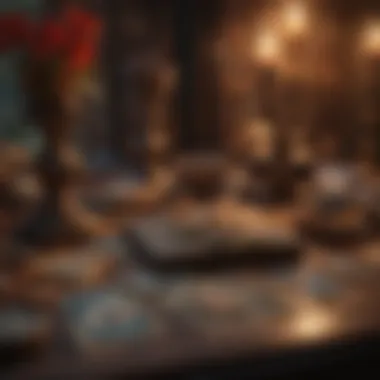
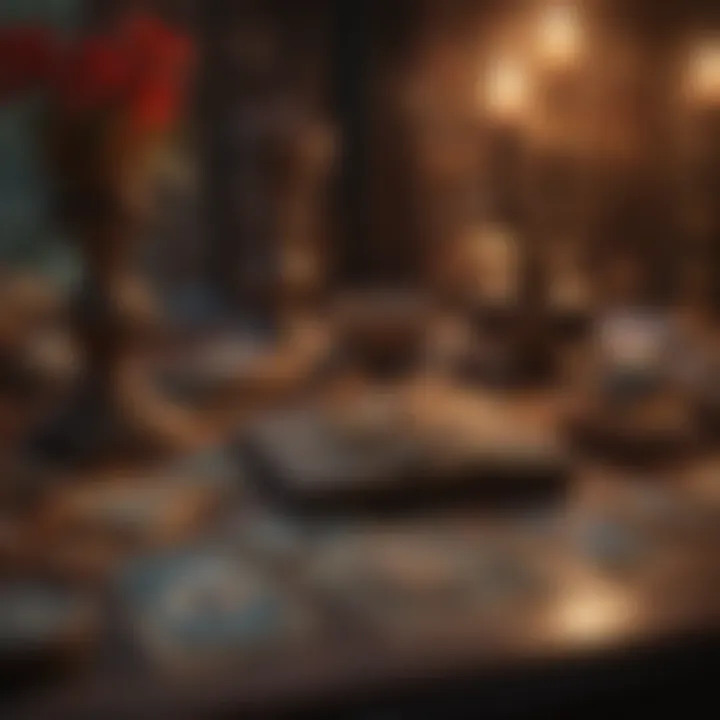
Common Misconceptions about Tarot
When it comes to tarot, numerous misconceptions can muddle its practice and interpretation. It’s crucial to address these myths, as they not only shape our understanding of tarot but also influence how practitioners and seekers engage with this profound tool for self-reflection. Foremost, these misconceptions can deter individuals from exploring tarot's potential as a means of personal growth and insight. By disentangling these myths from the realities of tarot, we can foster a deeper appreciation for its true value.
Tarot as a Fortune-Telling Tool
A common stereotype is that tarot is primarily a fortune-telling device, used solely to predict the future with uncanny precision. This notion simplifies the depth and complexity of tarot's function. In fact, tarot is much more intricate; it serves as a mirror to one's own psyche rather than merely a crystal ball for glimpsing the future.
- Personal Reflection: Rather than determining an unchangeable fate, tarot opens doors to self-exploration. A reading can prompt insights about one’s current situation, emotions, and motivations.
- Past, Present, Future: While the cards can highlight potential paths based on current energies, they’re not set in stone. What tarot offers is a glimpse of possible futures, which can guide decisions rather than dictate them.
- Empowerment Over Control: Those using tarot as a fortune-telling tool may overlook its potential for empowerment. Tarot assists in navigating life’s ups and downs, reminding individuals that they hold the reins in shaping their destinies.
In reality, practitioners often express that the true strength of tarot lies in its ability to facilitate dialogue—between the cards, and between the querent and their inner self.
"Tarot does not predict your future but instead highlights the various paths available to you, allowing you to make informed choices."
The Role of the Reader
Another misconception involves the role of the tarot reader, often perceived as a mystical figure with supernatural powers. In truth, the most effective readers are more akin to skilled guides navigating the querent’s internal landscape.
- Accessibility of Skills: While a keen intuition is important, it’s not the only requirement. A thorough understanding of the cards, the meanings behind them, and the reading method is essential for effective interpretation.
- Active Listening: A successful tarot reader must also be an active listener, grasping the querent's context and emotions. This connection helps to provide context to the reading, making it more relevant and insightful.
- Interpretation and Intuition: Rather than simply relaying what the cards depict, good readers synthesize both their intuitive feelings and the symbolic meanings of the cards to provide heartfelt insights connecting the querent to their experiences.
Ultimately, the quality of a tarot reading stems from the collaboration between the reader and the client, where both parties engage actively in the process—demystifying the notion that tarot should reside only in the realm of secrets and the occult.
The Future of Tarot in Modern Spiritual Practices
The landscape of tarot is shifting, evolving with the currents of modern spirituality. Once considered an esoteric pursuit, tarot is now firmly rooted in contemporary discussions about self-discovery, mental health, and personal empowerment. As more individuals seek meaningful connections in a fast-paced world, the relevance and applications of tarot are expanding.
Integration with New Age Practices
New Age practices, encompassing a broad spectrum of spiritual beliefs and healing modalities, have found a home for tarot within their frameworks. From yoga retreats to crystal healing workshops, the interplay between tarot and other esoteric practices has flourished. The shared objective of fostering personal growth creates a natural synergy.
Many practitioners now incorporate tarot cards into meditation sessions or group healings. For instance, pulling a card during a meditation can serve as a focal point, guiding participants to reflect and delve deeper into their inner selves. The card becomes more than just a tool for prediction; it opens a channel for conversation, introspection, and connection among participants.
Furthermore, tarot readings can complement practices like Reiki, where an understanding of emotional blocks provides clarity. By integrating tarot with these practices, insights can emerge more organically, leading to transformative experiences.
Technological Influence on Tarot Reading
In our digital age, technology has undoubtedly left its mark on tarot. The rise of tarot apps and online readings has changed how people access this ancient art. No longer confined to candle-lit rooms and shadowy corners, tarot is now just a few taps away on smartphones.
Online platforms provide a plethora of options: readers offer live sessions, and pre-recorded readings are available at one's convenience. Some apps even utilize algorithms to suggest card meanings based on user input. This surge in accessibility ensures that people can engage with tarot anytime, anywhere.
However, while technology can enhance the practice, it’s important for practitioners to maintain a balance. The personal touch of a live reading—be it in-person or via video—transcends what an app can deliver.
“The essence of tarot lies not only in the cards themselves but in the connection established between the reader and the seeker.”
In sum, while technology broadens accessibility, it should complement, not replace, traditional methods. The future lies in finding a harmonious blend of digital convenience and authentic human connection.
End: The Personal Journey with Tarot
As we reach the end of this exploration into tarot card prediction, it’s essential to reflect on the significance of engaging with tarot as a personal journey rather than just a method of divination. Tarot offers a unique lens through which individuals can examine their lives, dive deep into their emotions, and define their paths. The insights gained are not one-size-fits-all; rather, they adapt to one’s personal experiences, making every reading a unique event.
Tarot serves as a mirror, reflecting what lies within us. It's like taking a stroll through a gallery in your mind, where each card represents not just a concept, but a slice of your reality. The process of interpreting these cards enables you to connect the dots, bringing clarity to chaotic experiences. This interconnectedness emphasizes self-awareness, guiding not just fortune-telling but also personal development.
"Tarot cards are storytellers; they let you write your own story through reflection and insight."
Reflection and Continuous Learning
The journey with tarot is ongoing; it invites reflection and requires a commitment to continuous learning. Each reading can unveil new layers of understanding, urging practitioners to revisit past interpretations with fresh eyes. This cycle of reflection nurtures growth and equips individuals to tackle new challenges with heightened awareness.
Here are a few key points to consider about this continual learning process:
- Cultivate Your Intuition: The more you engage with tarot, the sharper your intuition becomes. This aspect is vital as it feeds into the accuracy and richness of your readings.
- Expand Your Knowledge: Explore various tarot decks, styles, and interpretations. Each variant brings a distinct energy that can deepen your insights.
- Document Your Journey: Keeping a tarot journal allows you to track your emotional and intellectual progression. You can reflect on past readings, note recurring themes, and understand your evolving relationship with the cards.
- Participate in Community: Engaging with communities on platforms such as reddit.com or facebook.com can enrich your journey. Sharing experiences with fellow enthusiasts often leads to valuable insights and diverse interpretations.
By embracing tarot as a tool for self-discovery, you embark on a transformative path. This journey is as much about the destination as it is about the personal growth developed along the way. Tarot's potential can only be fully realized by treating it not as an endpoint, but as a continuous exploration of the self, unlocking doors to deeper understanding and reflection in life.







